
Squatting is arguably the most fundamental lower body movement capable of developing a wide range of attributes, from strength to size.
Squatting can be generally categorized by simultaneous flexion and extension at the hip, knee, and ankle joints.
Table of Contents
The most popular way to squat is probably the back squat. Indeed, I think most people typically think of this squat variation when hearing the words “squatting” or “squats”.
However, the back squat, of course, isn’t the only way to squat.
There are multiple squat variations, such as front squats, low bar back squats, and safety bar squats.
All of these squat variations are bilateral, meaning two legs contribute to the movement.
But there are also unilateral squats, which are squat variations performed with a single leg.
There are a few unilateral squats. One of the more popular unilateral squat variations is the Bulgarian split squat, also called the rear elevated split squat or pitcher squat.
With this exercise, you place one leg behind your body and let it rest on an elevated platform (like a bench), the standing leg remains roughly below your torso, or slightly in front, and this leg squats up and down. Some have questioned whether this exercise is truly unilateral. Based on the current evidence, we’ve answered this question in another article.
In this article, we’ll be assessing how much the Bulgarian split squat carries over to the back squat, and the reverse of this, how much the back squat carries over to the Bulgarian split squat.
Bulgarian Split Squat and Squat Carryover: The Research
A paper by Spiers et al. gives us an insight into the degree of carryover between the Bulgarian split squat and back squat.
Let’s take a look at the details of the paper.
Protocol:
18 rugby academy players, with at least one year of resistance training experience, were allocated to a Bulgarian split squat or back squat group.
The Bulgarian split squat group performed the exercise with a barbell, and the rear foot was placed on a 40cm box. On each rep, participants squatted down to 100 degrees of knee flexion.
As you’d expect, the back squat group performed the back squat with a barbell. On each rep, participants also squatted down to 100 degrees of knee flexion.
Therefore squat depth was identical between both groups.
Both groups trained their respective exercise twice per week for 5 weeks.
The table below outlines the reps and sets used in each session for both groups (3 minutes of rest between sets):
Measurements:
Before and after the 5 weeks, the researchers measured a three-rep max on both the Bulgarian split squat and back squat for both groups.
The researchers used these three-rep maxes to predict one-rep max values for both exercises.
Results:
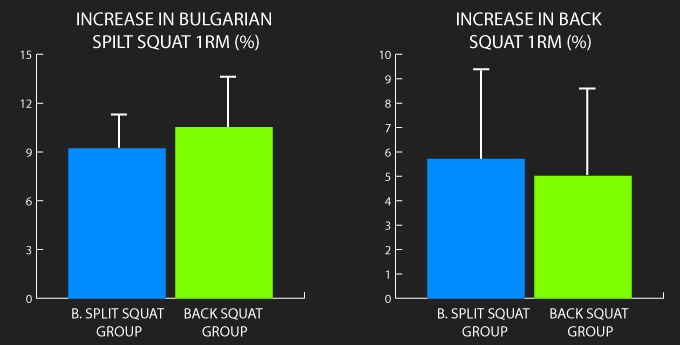
The Bulgarian split squat group increased their Bulgarian split squat one-rep max by 9.2%, while their back squat one-rep max increased by 5.7%.
The back squat group increased their Bulgarian split squat one-rep max by 10.5%, while their back squat one-rep max increased by 5.0%.
Discussion:
As shown by the results, the Bulgarian split squat and back squat seem to have an extremely good carryover to each other.
On average, training only the Bulgarian split squat was as effective as training the back squat only for increasing back squat one-rep max.
Similarly, training only the back squat was as effective as training the Bulgarian split squat only for increasing Bulgarian split squat one-rep max.
Before moving on, if you’re curious about creating an effective training program for muscle hypertrophy, our high quality partner Alpha Progression can help. It can generate a highly effective program for you, track your workouts live with in-built progression recommendations, provide graphs displaying your long term progress, and it has a massive exercise database with more than 550 exercises.
Click HERE (the link opens in a new tab) to get a free 2 week trial of the apps features. If you like it and go beyond, the link also gives you 20% off a subscription!
We never promote trash at the House of Hypertrophy, so rest assured the app is high quality. The reviews speak to this, 4.8 starts (based on more than 7,000 reviews) on Google play, and 4.9 stars in Apple’s store (based on nearly 400 ratings).
Explaining These Results & Comparing the Movements
So, what explains these results?
I think this is because both movements are very similar in nature.
Deforest et al. found that the displacement of the barbell (the distance the bar travels) during both movements are comparable.
Although there currently is no study assessing this, the hip and knee joints do appear to go through a similar range of motion with both the Bulgarian split squat and back squat.
Indeed, the Spiers et al. study had participants performing both exercises to 100 degrees of knee flexion.
Moreover, there does exist electromyographic research (which measures a muscle’s electrical activity) finding similar electrical activity for some of the lower body muscles between the Bulgarian split squat and back squat.
I must mention that electromyography comes with its limitations, and inferring long-term adaptations (such as muscle growth and strength gains) from it exclusively isn’t always justified.
However, I’ll first go through the current electromyographic research and then detail why I think the results are still useful.
Andersen et al. found that a 6 rep-max load on both exercises elicited similar activity of the vastus lateralis and vastus medialis.
Deforest et al. compared an 85% one-rep max back squat to Bulgarian split squats with half this load (so a 42.4% back squat one-rep max load). Activity of the gluteus maximus, biceps femoris, rectus femoris, vastus lateralis, and vastus medialis was similar between the two exercises.
Now, similar to the Spiers et al. study, these two studies measuring electromyography used a barbell with the Bulgarian split squat.
But, the Bulgarian split squat can also be performed by holding dumbbells either side of your body.
Jones et al. compared a 10-rep max Bulgarian split squat (with dumbbells) to a 10-rep max back squat. Activity of the gluteus maximus and vastus lateralis were similar between both exercises.
There is research finding some differences in electrical activity of some muscles between these two exercises as well.
More specifically, the Andersen et al. study found that biceps femoris (part of the hamstrings) electrical activity was greater for the Bulgarian split squat compared to the back squat while rectus femoris electrical activity was greater for the back squat.
Another paper by Mccurdy et al. found that during Bulgarian split squats and back squats with 85% of a three-rep max, electrical activity of the biceps femoris and gluteus medius was greater for the Bulgarian split squat while rectus femoris electrical activity was greater for the back squat.
So, let’s take a step back and analyze these various studies.
Gluteus Maximus & the Vastus Muscles of the Quadriceps
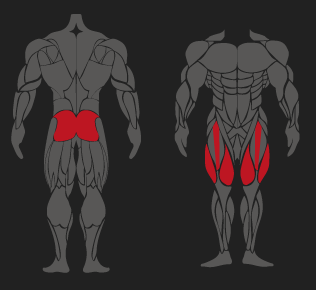
Overall, activity of the gluteus maximus and the vastus muscles of the quadriceps appear to be similar between the Bulgarian split squat and back squat.
Of course, as mentioned, considering the limitations of electromyography is important.
However, given that both movements would probably involve similar knee and hip joint range of motions, and we have evidence both movements have a really good carryover to each other, I think it is very likely that gluteus maximus and the vastus muscles of the quadriceps are similarly activated in both movements.
Rectus Femoris
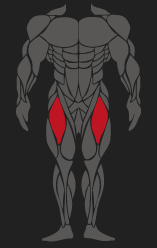
As for the rectus femoris (the other muscle of the quadriceps), one study (Deforest et al.) found similar activity between the two exercises, while two other studies (Andersen et al. & Mccurdy et al.) found greater activity of this muscle for the back squat.
However, I think this is very much down to the limitations with electromyography. In any squatting movement, the rectus femoris, due to its biarticular nature (it crosses both the hip and knee joint), cannot significantly contribute to force production. In our “Is the Squat Enough for Maximizing Leg Growth?” article, we detail this more and demonstrate the research indicates back squat training does not grow the rectus femoris much.
Given this, I think neither the back squat or Bulgarian split squat would heavily involve the rectus femoris.
Hamstrings
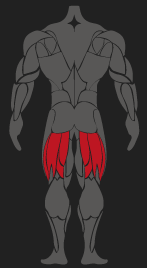
For the hamstrings, one study found similar electrical activity of the biceps femoris and semitendinosus (Deforest et al.), while two studies found greater electrical activity of the biceps femoris with the Bulgarian split squat (Andersen et al. & Mccurdy et al.).
However, similar to the rectus femoris, due to the hamstring’s biarticular nature (they also cross the hip and knee joints), they simply cannot be heavily involved during any squatting (simultaneous knee and hip extension) movement. Again, in our “Is the Squat Enough for Maximizing Leg Growth?” article, we deatil this and demonstrate the research indicates back squat training does not signficantly growth the hamstings.
Therefore, I do think it’s likely neither the Bulgarian split squat or back squat would substantially involve the hamstrings.
That said, there is a balance component with the Bulgarian split squat. I think this balance component can result in higher recruitment of the hamstrings just to stabilize the leg. This might be the reason why two of those studies found greater biceps femoris electrical activity for the Bulgarian split squat.
But at the end of the day, I’m skeptical the Bulgarian split squat would significantly hypertrophy the hamstrings in the long run. As mentioned, the hamstrings cannot fully contract during squatting motions (simultaneous hip and knee extension).
Gluteus Medius
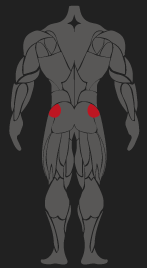
The Mccurdy et al. study did find greater gluteus medius activity with the Bulgarian split squat.
This is an interesting finding. As noted by the authors of this paper, this could be because with the Bulgarian split squat, there might be a greater tendency to drop the knees inwards (knee valgus). The glute medius, which abducts the hips, could be more recruited here to prevent this knee valgus.
Yet, the tendency for the knees to drop inwards is still somewhat there with the regular back squat.
At the end of the day, I’m not confident in concluding the gluteus medius is more activated with the Bulgarian split squat based on a single electromyographic study. Hopefully future research can address this area.
Conclusion
So anyway, to return to the overall point, the reason why the Bulgarian split squat and back squat appear to have a really good carryover to each other is likely due to the many similarities between the movements.
Fundamentally, both movements are squats. That is, both involve simultaneous hip and knee extension.
Additionally, both movements appear to involve a comparable range of motions at the hip and knee joints.
Lastly, as discussed, I think it’s very likely both movements involve similar involvement of the gluteus maximus and vastus muscles of the quadriceps.
Remember to feel free to check out the Alpha Progression App if you’re interested. Also feel free to check out our free bench press e-book below.


Thanks for doing this comparison! You seem to be the only one who’s done so.
I’d also be curious whether the percentiles on the strengthlevel website can be used to estimate one lift from the other. For example, if I weigh 170 lb and can do 62 lbs db BSS (“intermediate”), does that mean I can do 273 lbs on back squat? Hopefully someone one day does a comparison of weights so that I can estimate my squat strength from my BSS since I never do the former!
Hey, thank you for the comment!
That’s an interesting question. I think using strength standards, although not terrible (and can probably be accurate in some cases), has quite a bit of room for error.
I would use a more mathematical approach to try to figure out what you’re after. Generally, with a Bulgarian split squat, the leg you are training generally holds 84% of the total weight, while the rear leg that’s elevated behind you takes the rest – 16% (I discussed the research I deriveved this from here: https://houseofhypertrophy.com/unilateral-bulgarian-split-squat/).
Therefore, if you use 62lbs dumbbells (on either hand) with a BSS, your working leg (the one performing the squat) would be squatting a total load of around 104lbs.
Given a back squat requires you to push with both legs, we could double the load you are able to press with one leg on the BSS, so this equates to 208lbs. Therefore, you should be able to squat 208lbs. I hope this calculation makes sense. If not, feel free to ask/question any of it and I’ll try my best to clarify.
However, I should also mention that any calculation (whether it be using strength standards or the one I’ve done) does not account for other important factors. For instance, the back squat is a skill itself, involves coordinatation, as well as spinal erector stabilization (something the BSS does not neccessarily involve).